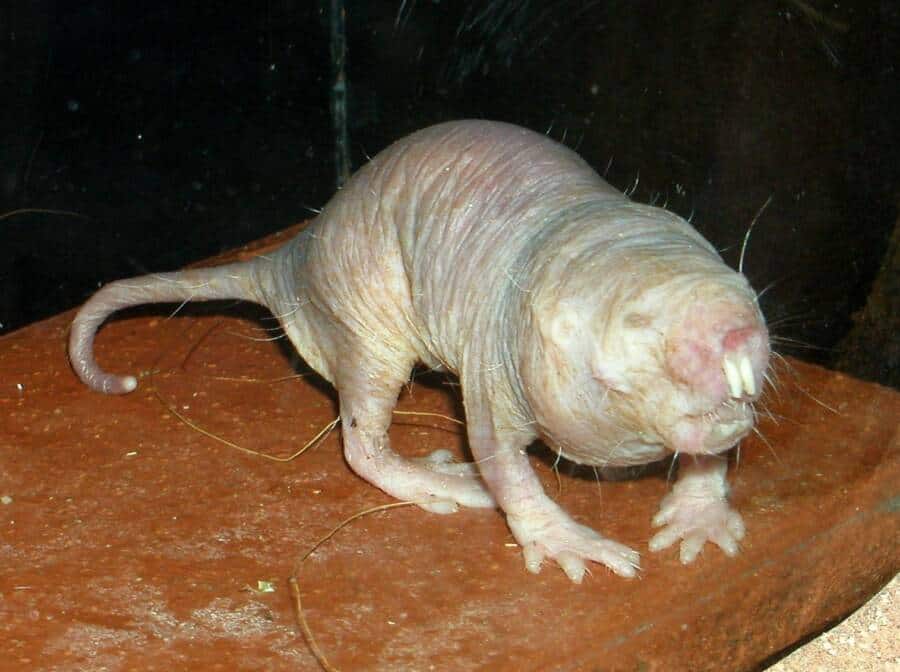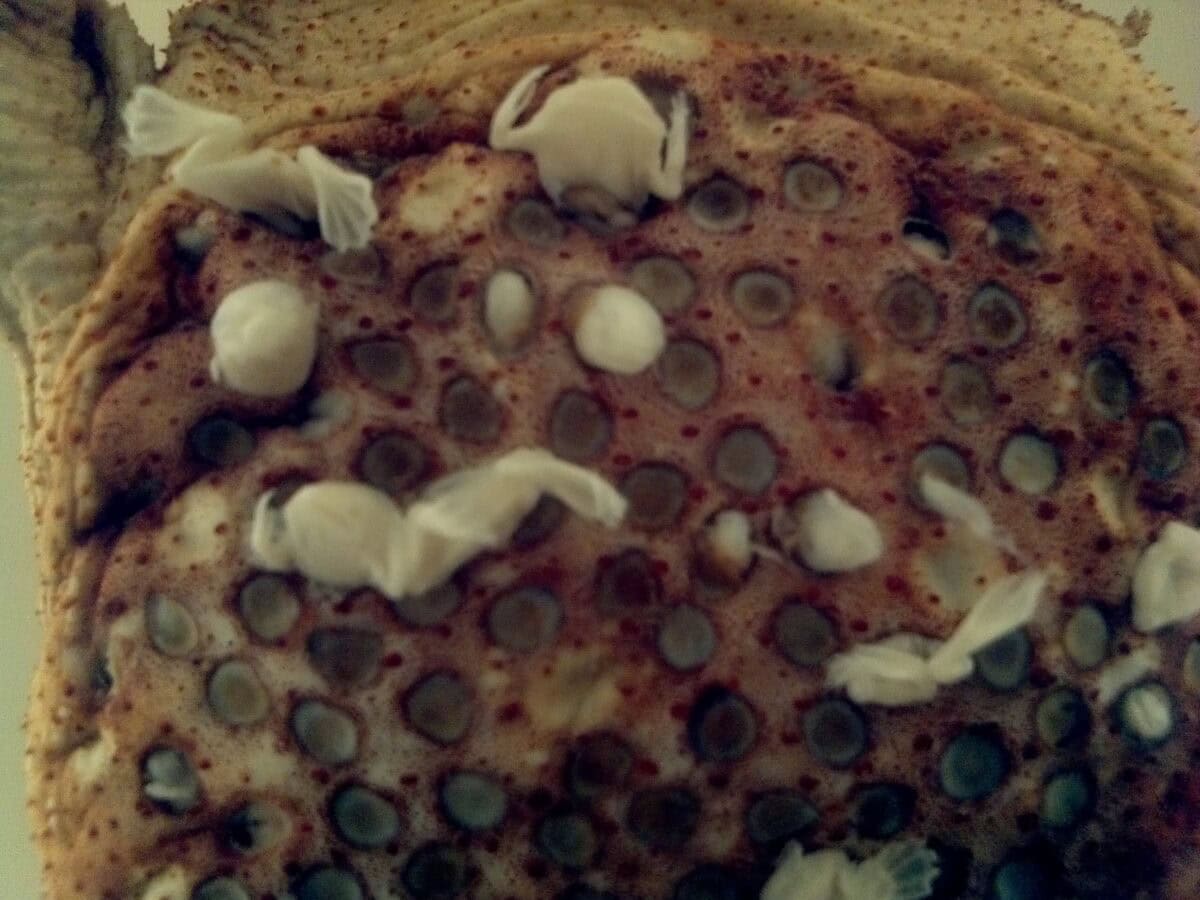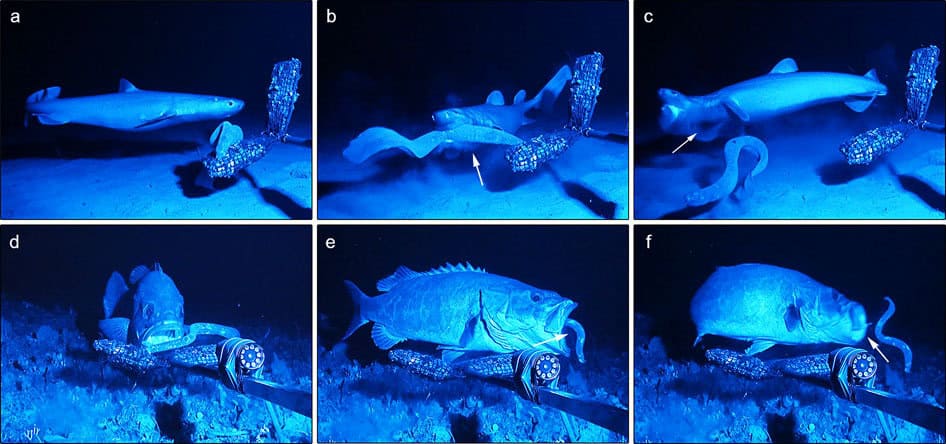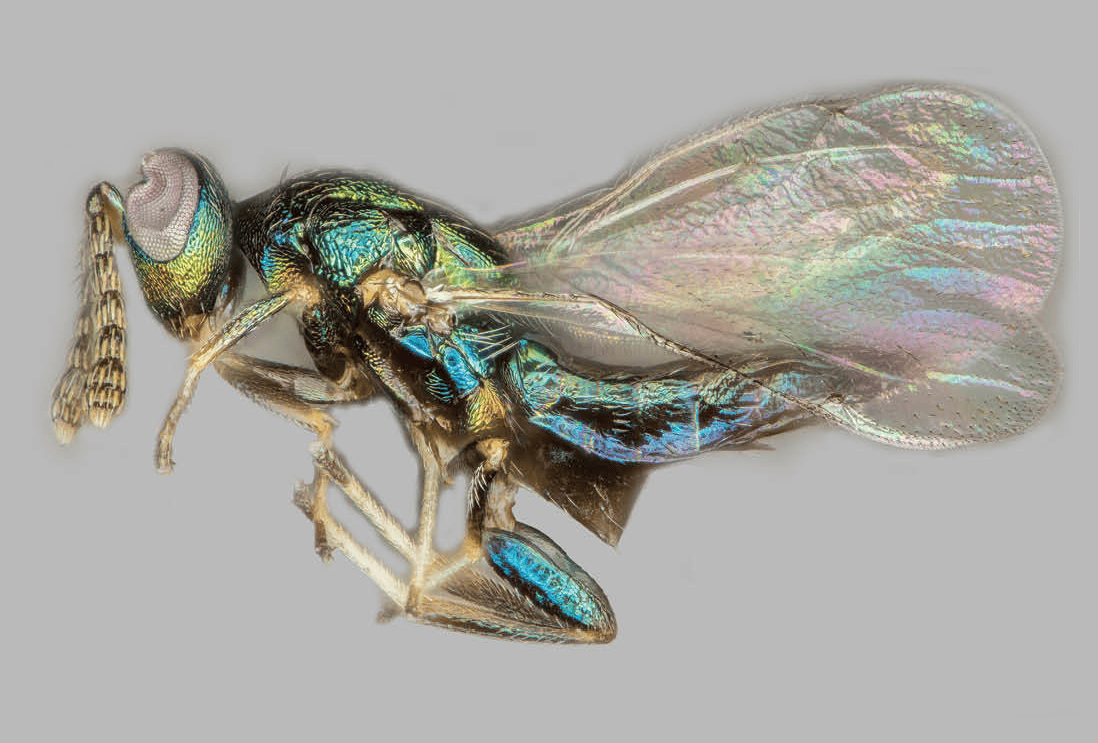Nature has been experimenting with evolution for billions of years, creating some truly bizarre adaptations that help creatures survive in their respective environments. From animals that can regrow entire body parts to those with built-in chemical weapons, the natural world is full of biological innovations that seem almost too strange to be real. These extraordinary adaptations highlight how species evolve unique solutions to life’s challenges, often in ways that appear alien to human understanding. Let’s explore 14 of the most peculiar and fascinating adaptations that demonstrate the incredible diversity and ingenuity of life on Earth.
14. The Self-Destructing Ants of Borneo

The Camponotus cylindricus ants of Borneo have perhaps one of the most extreme defense mechanisms in the animal kingdom. When their colony is threatened, certain worker ants, called “exploding ants,” will deliberately rupture their own abdomens in a process called autothysis. This suicidal behavior releases a sticky, toxic yellow substance that immobilizes and kills predators. Their abdomens are filled with oversized glands containing this corrosive glue, essentially turning themselves into walking bombs. Scientists have observed that these ants will specifically target invaders, latching onto them before detonating their bodies to protect the colony. This ultimate sacrifice ensures the colony’s survival and represents one of the most dramatic examples of altruism in nature.
13. The Bombardier Beetle’s Chemical Warfare

The bombardier beetle possesses one of the most sophisticated chemical defense systems known in the animal kingdom. When threatened, this insect mixes two separate chemicals—hydroquinone and hydrogen peroxide—in a specialized chamber in its abdomen. These chemicals react violently when combined with catalytic enzymes, creating an exothermic reaction that brings the mixture to near boiling point (around 100°C or 212°F). The beetle then precisely aims and fires this scalding chemical spray at predators with remarkable accuracy, even controlling the direction with flexible abdominal tips. The spray is ejected with an audible popping sound and can be fired in rapid pulses or as a continuous stream. Perhaps most impressive is that the beetle has evolved specialized compartments that keep these reactive chemicals separated until needed, preventing self-harm while maintaining a potent defense mechanism ready for deployment at a moment’s notice.
12. The Axolotl’s Regenerative Superpowers

The Mexican axolotl (Ambystoma mexicanum) possesses regenerative abilities that seem like something from science fiction. Unlike most vertebrates, these salamanders can regrow entire complex body structures throughout their lives. If an axolotl loses a limb, it can regenerate a perfect replacement, complete with bones, muscles, nerves, and blood vessels in the correct formation. Even more incredibly, they can regenerate portions of their brain, heart, spinal cord, and other vital organs without scarring. They accomplish this remarkable feat through specialized cells called blastema, which form at the injury site and differentiate into whatever cell types are needed. Scientists have identified that axolotls retain embryonic developmental genes active throughout their lifespan, allowing them to essentially rerun development programs when needed. This extraordinary ability has made axolotls key research subjects for regenerative medicine, with scientists hoping to unlock similar healing potential in humans.
11. The Pistol Shrimp’s Sonic Weapon

The pistol shrimp, despite its small size of only 3-5 cm, possesses one of the most powerful weapons in the animal kingdom. One of its claws has evolved into a specialized sonic gun that can create a bubble cavitation effect powerful enough to stun or kill prey. When the shrimp snaps this modified claw shut, it shoots out a jet of water at speeds of up to 62 mph (100 km/h), creating a low-pressure bubble that rapidly collapses with an incredible force. This collapse produces a sound reaching 218 decibels—louder than a gunshot and one of the loudest sounds produced by any animal on Earth. The collapsing bubble also generates a flash of light and temperatures momentarily reaching nearly 8,000°F (4,400°C), almost as hot as the surface of the sun. The resulting shock wave stuns nearby fish, allowing the shrimp to capture them easily. Colonies of pistol shrimp can create such significant underwater noise that they’ve been known to interfere with sonar equipment and submarine detection systems.
10. The Hairy Frog’s Wolverine-Like Claws

The Trichobatrachus robustus, commonly known as the hairy frog or Wolverine frog, has developed one of the most unusual defensive adaptations known in vertebrates. When threatened, this Central African amphibian can break its own toe bones and push them through the skin to create sharp, claw-like weapons. The process begins with the frog intentionally contracting muscles that cause the bone to break at a specialized, flexible zone. As the bone breaks, its sharp end pierces through the frog’s skin and digit pad, creating a formidable claw. What makes this adaptation even more remarkable is that once the danger passes, the frog can retract these claws back into its toes, and the skin heals without significant scarring. The exact mechanism of how the bones retract and heal remains something of a scientific mystery. This self-mutilating defense mechanism is extremely rare in the animal kingdom and represents an extraordinary evolutionary solution to predation pressure.
9. The Mimic Octopus’s Shape-Shifting Abilities

The mimic octopus (Thaumoctopus mimicus) takes camouflage to an entirely different level with its remarkable ability to impersonate other marine species. Discovered in 1998 in the waters of Indonesia, this cephalopod can transform its body shape, color, texture, and behavior to mimic at least 15 different species, including dangerous sea creatures like lionfish, sea snakes, and flatfish. The octopus selects its impersonation strategically based on the specific threat it faces. For example, when confronted by damselfish, it might mimic a banded sea snake, a natural predator of damselfish. Beyond changing colors using specialized cells called chromatophores, the mimic octopus can contort its flexible body and arrange its eight arms in various configurations to create convincing silhouettes of other animals. It can even modify its swimming style to complete the deception, such as pulling its arms into its body and undulating like a flatfish along the ocean floor. This level of sophisticated mimicry involving multiple attributes simultaneously is unparalleled in the animal kingdom and represents one of the most complex behavioral adaptations ever observed.
8. The Naked Mole Rat’s Cancer Immunity

The naked mole rat (Heterocephalus glaber) has evolved one of the most medically significant adaptations known to science: virtual immunity to cancer. Despite living up to 30+ years—extraordinarily long for a rodent of its size—researchers have documented almost no naturally occurring cases of cancer in these animals. The naked mole rat’s cells contain a unique version of a gene called p16 that stops cells from crowding together once they reach a certain density, preventing the uncontrolled growth characteristic of tumors. Additionally, they produce an extremely high-molecular-weight form of hyaluronan, a substance that appears to provide additional cancer resistance by preventing cells from becoming malignant. Their cells are also hypersensitive to overcrowding and will undergo programmed cell death if abnormal growth occurs. Beyond cancer resistance, these remarkable animals can survive in extremely low-oxygen environments for up to 18 minutes, feel almost no pain on their skin, and maintain their fertility throughout their unusually long lives. Scientists are studying naked mole rats intensively, hoping their unique biology might hold keys to new cancer treatments and extended human longevity.
7. The Surinam Toad’s Back-Birthing Phenomenon

The Surinam toad (Pipa pipa) has developed perhaps one of the most visually disturbing reproductive adaptations in the animal kingdom. During mating, the male fertilizes eggs on the female’s back, which then sink into specially developed pockets in her skin. Over time, the female’s skin grows over these eggs, creating a honeycomb-like structure across her back. For the next 3-4 months, the embryos develop inside these pockets, completely encased in the mother’s tissue. When development is complete, fully formed toadlets—not tadpoles—emerge by pushing through the skin on their mother’s back in a scene reminiscent of science fiction horror. Each pocket develops individually, so the toadlets may emerge over several days. After all offspring have emerged, the mother sheds the honeycomb layer of skin and regrows a smooth back until the next breeding cycle. This strange adaptation protects developing offspring from predators in their aquatic environment and eliminates the vulnerable tadpole stage entirely. The Surinam toad’s approach to parental care represents one of nature’s most unusual solutions to ensuring offspring survival.
6. The Wood Frog’s Freeze-Thaw Survival System

The wood frog (Lithobates sylvaticus) has evolved one of the most extreme cold-weather survival mechanisms known to science: it can literally freeze solid and then thaw back to life. During winter, these remarkable amphibians allow up to 65% of their total body water to freeze, turning them into frog-shaped ice blocks. Their hearts stop beating, they cease breathing, and all measurable metabolic activity halts. This suspended animation state would kill most vertebrates, but wood frogs have developed specialized biochemical adaptations to survive. As temperatures drop, their livers begin converting glycogen into glucose and other cryoprotectants, flooding their cells with these natural “antifreeze” compounds that prevent fatal intracellular freezing. These chemicals protect vital organs and cell structures while allowing ice to form in less critical spaces between cells and organs. When spring arrives and temperatures warm, the frogs gradually thaw from the inside out—their hearts start beating, blood begins flowing, and within hours they resume normal activity as if nothing extraordinary happened. This freeze-tolerance has allowed wood frogs to inhabit regions far north of other amphibians, even surviving in the Arctic Circle where winter temperatures regularly plunge below -40°F.
5. The Lyrebird’s Unmatched Vocal Mimicry

The superb lyrebird (Menura novaehollandiae) of Australia possesses what may be the most sophisticated vocal mimicry abilities in the animal kingdom. These ground-dwelling birds can recreate virtually any sound they hear with astonishing accuracy. Their remarkable syrinx—the avian equivalent of a voice box—is the most complex found in birds, containing unique muscles that allow for extraordinary vocal control. Lyrebirds can imitate other bird calls so perfectly that they fool the birds themselves, but their abilities extend far beyond natural sounds. They can mimic human speech, musical instruments, car alarms, chainsaws, camera shutters, and even complex mechanical sounds like forestry equipment with uncanny precision. One famous lyrebird at an Australian wildlife park learned to imitate the sounds of construction work perfectly, including hammering, drilling, and sawing. Most remarkably, male lyrebirds incorporate these imitations into elaborate courtship displays, combining up to 20 different sounds in a single performance while dancing and manipulating their spectacular lyre-shaped tail feathers. They can even recreate entire soundscapes, seamlessly transitioning between different sounds to reproduce the acoustic environment around them. This exceptional mimicry ability evolved as sexual selection, with females preferring males who can perform the most complex and accurate sound reproductions.
4. The Platypus’s Electroreception and Venom Combo
The duck-billed platypus (Ornithorhynchus anatinus) combines so many bizarre adaptations that when European naturalists first encountered specimens, they suspected a hoax. Among its strangest features is its specialized electrosensory system. The platypus has approximately 40,000 electroreceptors embedded in its leathery bill that can detect the tiny electrical fields generated by muscle contractions of prey animals. When hunting, the platypus closes its eyes, ears, and nostrils completely, navigating and locating prey entirely through this sixth sense. What makes this adaptation even more remarkable is that the platypus is one of the few mammals that produces venom. Male platypuses have hollow spurs on their hind legs connected to venom glands. The venom, which contains over a dozen different compounds not found in any other species, causes excruciating pain resistant to morphine and can kill smaller animals. Scientists believe the venom evolved primarily for competition between males during breeding season rather than for hunting. The platypus’s unique combination of mammalian traits (producing milk and fur), reptilian traits (laying eggs and having venom), and specialized adaptations like electroreception make it one of evolution’s most unusual experiments.
3. The Mantis Shrimp’s Hyperspectral Vision

The mantis shrimp possesses the most complex visual system ever discovered in the animal kingdom. While humans have three types of color-detecting cells (cones) in our eyes, mantis shrimp have up to 16 different photoreceptor types. This allows them to perceive colors far beyond human imagination, including ultraviolet and infrared light. Their eyes sit on independently moving stalks and can process different parts of the visual field separately, essentially giving them trinocular vision from each eye. The mantis shrimp can also detect polarized light and circular polarization—something no other animal can do and that requires sophisticated camera equipment for humans to detect. Some species can even tune their color sensitivity based on their environment. What makes this adaptation particularly remarkable is that mantis shrimp don’t process visual information like humans do. Rather than comparing inputs from different color receptors, they appear to use a simpler, faster recognition system that allows near-instantaneous color identification. This sophisticated visual system likely evolved to help these aggressive predators quickly identify prey, predators, and potential mates in the visually complex coral reef environments they inhabit. Their eyes are so specialized that scientists are studying them to develop better optical devices, including potential cancer detection technologies.
2. The Hagfish’s Defensive Slime

The hagfish has perfected perhaps the most disgusting yet effective defense mechanism in the animal kingdom. When threatened, this ancient, eel-like creature can produce up to 5.5 gallons (20 liters) of slime in less than a second from specialized slime glands along its body. This remarkable substance begins as a concentrated gel that expands 10,000 times its original volume upon contact with seawater. A mere teaspoon of the concentrated slime can turn a 5-gallon bucket of water into gel. The slime itself is a unique biological material composed of mucus and thread-like proteins called intermediate filaments. These microscopic threads are just 12 nanometers in diameter but can stretch to 15 centimeters in length—proportionally thinner than a spider’s silk but three times stronger than nylon. The slime effectively clogs the gills of would-be predators, forcing them to retreat or risk suffocation. For the hagfish itself, the risk of becoming trapped in its own slime is real; they can tie themselves in knots, using the motion to wipe off excess slime as they escape. Beyond its defensive properties, hagfish slime has captured the attention of materials scientists, who see potential applications for this natural hydrogel in everything from sustainable fabrics to protective clothing due to its remarkable combination of strength, expansion capability, and biodegradability.
1. The Crypt Keeper Wasp’s Mind Control

Discovered only in 2017, the crypt keeper wasp (Euderus set) exhibits one of the most diabolical parasitic adaptations ever documented. This tiny wasp has evolved to manipulate another parasitic wasp species, Bassettia pallida, which itself lives inside oak tree galls. The female crypt keeper lays its eggs inside galls already occupied by Bassettia larvae. As the crypt keeper larva develops, it somehow manipulates the brain of its host, altering its natural behavior in a remarkable display of extended phenotype. When a normal Bassettia wasp matures, it chews an escape tunnel through the gall, then emerges fully. However, a Bassettia infected by the crypt keeper will only chew a partial escape tunnel and then plug the hole with its head before stopping altogether. The infected wasp then becomes paralyzed in this position, with its head blocking the tunnel.
- Wild Horses Still Roam the Outer Banks of North Carolina, and Their Origins Are a Mystery - August 20, 2025
- 14 Dangerous Animals That Have Been Spotted in US Backyards - August 20, 2025
- How Leafcutter Ants Use Fungus to Grow Their Own Food - August 20, 2025

